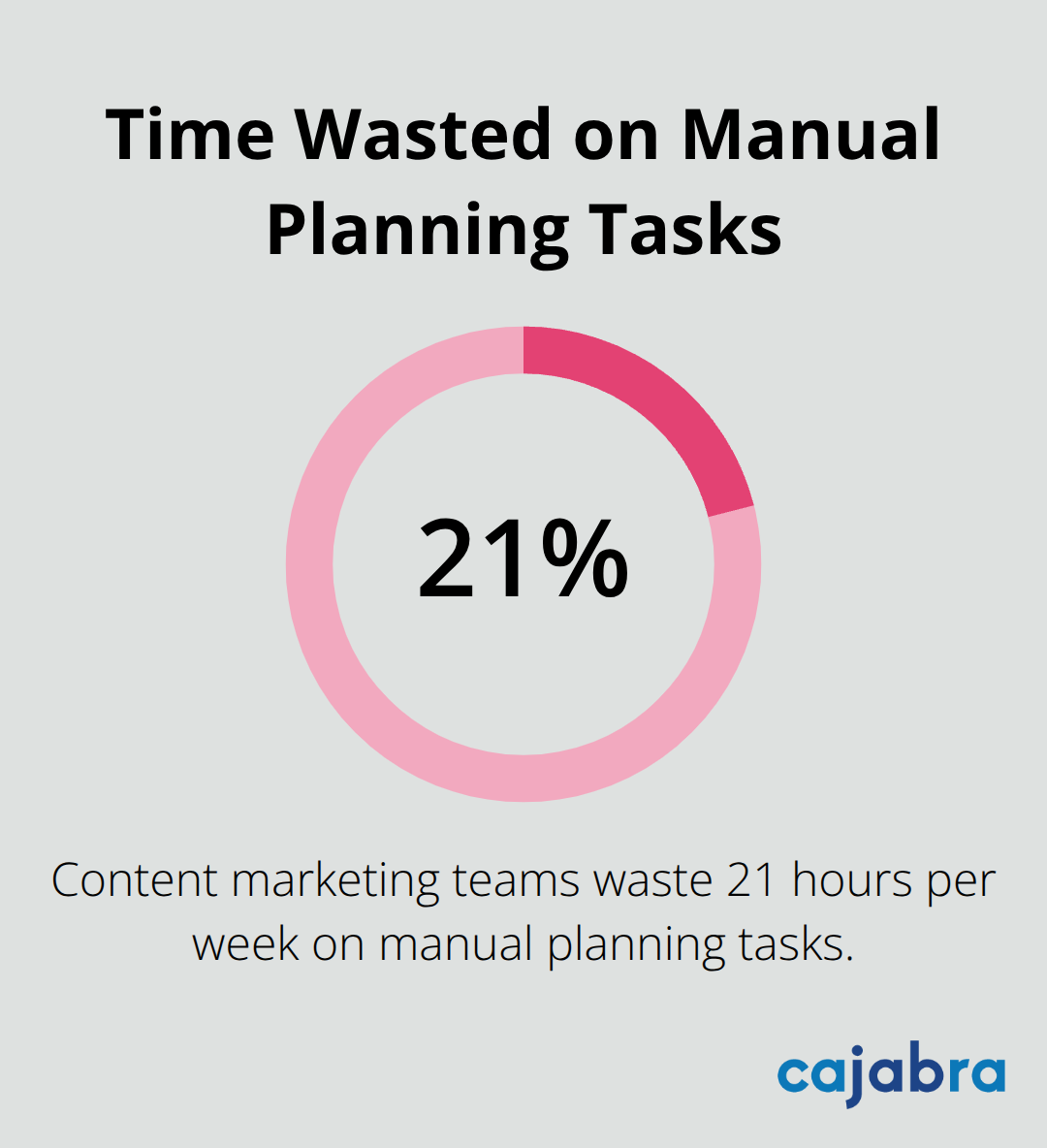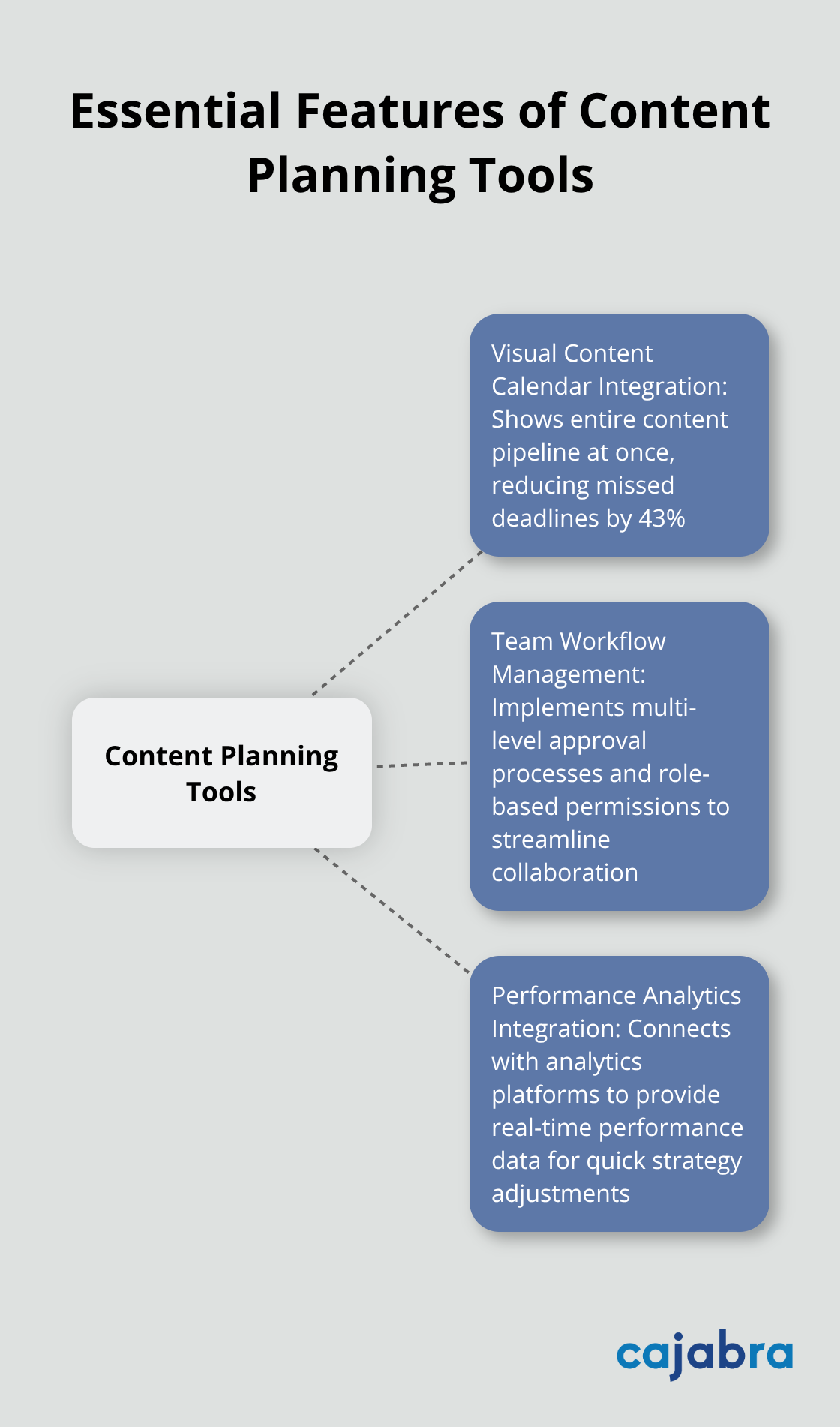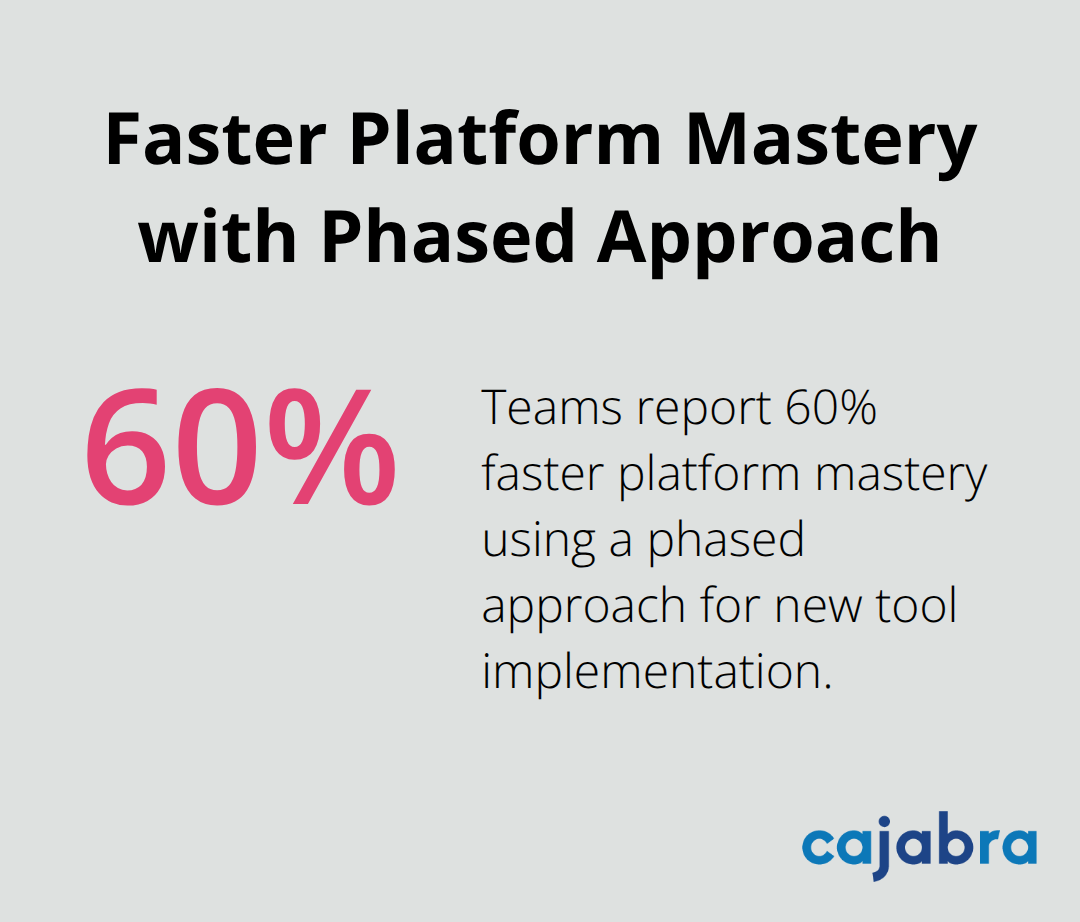
Content marketing teams waste 21 hours per week on manual planning tasks, according to CoSchedule's 2024 State of Marketing report. The right content marketing planning tool changes everything.
We at Cajabra, LLC have seen businesses double their content output while cutting planning time in half. The key lies in selecting software that matches your team's specific workflow needs.

Your content planning tool needs three non-negotiable features that separate winners from time-wasters. Teams that use tools without proper calendar functionality spend 67% more time on coordination tasks. Smart scheduling prevents content gaps and maintains consistent publishing rhythms across channels.

A robust visual calendar shows your entire content pipeline at once. Teams report 43% fewer missed deadlines when they can drag and drop content between dates. The calendar must display multiple content types simultaneously - blog posts, social media updates, email campaigns, and video content. Tools like Monday.com excel here with color-coded project timelines that prevent scheduling conflicts (starting at $8 per user monthly). Your calendar should integrate with Google Calendar and Outlook to sync with existing workflows. Real-time updates across team members prevent double-booking and content overlaps that waste resources.
Multi-level approval processes eliminate bottlenecks that slow content production. HubSpot's workflow system allows content to move through writer, editor, and manager approval stages automatically. Teams need role-based permissions so freelancers access only assigned projects while managers oversee everything. Notion increased Mangopay's team collaboration to 91% monthly participation when they centralized all content discussions. Comment threads attached to specific content pieces replace endless email chains. Task assignment with deadline notifications keeps projects moving forward without constant check-ins (eliminating up to 10 hours of weekly coordination time).
Your tool must connect directly with Google Analytics, social media platforms, and email marketing systems. Buffer's analytics show which content types generate the most engagement within 24 hours of publication. Real-time performance data helps teams adjust strategies quickly rather than wait for monthly reports. ON24 quadrupled their blog output after they implemented centralized tracking that showed exactly which topics drove traffic. The analytics dashboard should display ROI metrics, not just vanity numbers like likes and shares.
These core features form the foundation of effective content planning, but the market offers dozens of tools that claim to deliver them. The next step involves comparing the top platforms to find which one matches your team's specific needs and budget constraints.
HubSpot Content Marketing Software connects content performance directly to lead generation and customer acquisition metrics. The platform moves content through approval stages automatically with workflow automation, while their content scoring system ranks ideas based on business impact and resource requirements. Teams using HubSpot complete content approval cycles faster compared to email-based workflows. The free version includes basic content calendar features for up to five users, which makes it accessible for teams that want to test the platform. Advanced analytics and automation features require the Marketing Hub Professional plan at $890 monthly, putting it beyond reach for smaller organizations.
CoSchedule saves users hours weekly through their ReQueue feature, which automatically reshares top-performing social media posts. The editorial calendar uses color-codes to organize content by type, status, and team member, providing instant visibility into project bottlenecks. Teams can publish blog posts directly from the interface through WordPress integration. Their Marketing Suite starts at $29 monthly for small teams but scales to $149 for agencies that manage multiple client accounts. The platform works best for teams that publish across multiple channels simultaneously and need centralized campaign management.
Hootsuite Content Planning Features serve teams where social media drives the majority of content marketing efforts. The platform supports bulk upload capabilities for high-volume posting across all major social networks. Their content curation tools suggest topics based on industry keywords and competitor analysis. The analytics dashboard tracks engagement metrics in real-time, helping teams identify optimal posting times and content formats. However, Hootsuite lacks robust blog content planning features and email marketing integration that other platforms provide (starting at $99 monthly for larger businesses with limited collaboration features on lower-tier options).
Each platform excels in specific areas, but selecting the right tool requires more than feature comparison. The implementation strategy determines whether your team actually adopts the new system or abandons it within the first month. Success depends on measuring content marketing ROI and tracking performance metrics that align with your business goals.
The first 30 days determine whether your team adopts the new platform or abandons it for familiar spreadsheets. Start by mapping your current content creation process from idea generation to publication. Document every step your team takes currently, including who approves what and when deadlines typically occur.
Teams that skip this mapping phase experience higher tool abandonment rates. Import your existing content calendar into the new platform immediately rather than starting fresh. This gives your team familiar reference points while they learn new features.
Configure approval workflows to match your current hierarchy exactly. Forcing new processes during tool adoption creates unnecessary resistance that derails implementation success.
Roll out platform features weekly rather than overwhelming your team with everything simultaneously. Week one should focus solely on calendar navigation and basic content scheduling. Week two introduces collaboration features like comments and task assignments.
Teams that use this phased approach report 60% faster platform mastery compared to comprehensive training sessions. Create video tutorials for each feature using your actual content examples rather than generic demonstrations.

Monday.com users who receive role-specific training complete projects faster than those getting general platform overviews. Assign power users within each department who can answer questions without involving management constantly.
Track time savings rather than feature usage statistics during the first quarter. Document how long content approval cycles take before and after implementation. Successful teams see approval times drop from 5-7 days to 2-3 days within 60 days of proper implementation.
Monitor content publishing consistency by tracking missed deadlines and last-minute rushes. The most important metric involves content performance improvements (track whether your published content generates more engagement and conversions than pre-tool content).
Teams that focus on business impact metrics rather than platform usage data make better optimization decisions and justify their tool investment to leadership more effectively. Consider implementing content marketing KPIs to track your progress systematically.
The right content marketing planning tool transforms chaotic workflows into streamlined systems that save 21 hours weekly. Visual calendars, team collaboration features, and performance analytics form the foundation of effective content planning software. Small teams under 10 people benefit most from CoSchedule's affordable pricing and automated resharing capabilities, while growing businesses need HubSpot's CRM integration to connect content performance with lead generation metrics.
Large organizations require Hootsuite's bulk publishing features for high-volume social media management. Implementation success depends on gradual feature rollouts and measuring time savings rather than usage statistics (teams that map existing workflows before switching platforms achieve 60% faster adoption rates). Your content marketing planning tool investment pays dividends when it reduces approval cycles from seven days to three days while maintaining publishing consistency.
We at Cajabra, LLC help accounting firms implement systematic marketing approaches that generate consistent client acquisition. Our specialized marketing services move accountants from overlooked to overbooked through proven systems and automated workflows. Start your tool selection by identifying your team's biggest time-wasting activities, then choose the platform that addresses those specific pain points most effectively.



